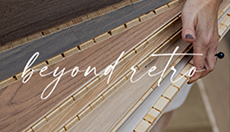Your Guide On How To Refinish Hardwood Floors
July 21, 2022
Hardwood Floors are a good flooring investment because they are sustainable and have a functional design. But just like everything else in your home, it requires maintenance and care. Everyday tear and wear may accumulate scratches, discoloration, and blemishes on the smooth wood surface. But since it is a sustainable material, you can sand it down to refinish it instead of replacing them completely. You have saved a penny by buying new, while you get a new and refined look for your wood flooring
To help you in refinishing your wooden floors, here’s a step-by-step guide on how to do it appropriately:
Prepare Your Materials and Make Necessary Repairs
Prepare all the materials that you need. Some tools and materials include wood fillers, sanding screen, hardwood floor cleaner, hammer, shop-vac, orbital sander, foam applicator pad, and everything in between.
Once you have prepared all the things that you need, you now clear the area for an easier and more comfortable space to work in. Vacuum the floor surface with a Shop-Vac and mop any remaining dust particles, so that the floors will dry completely before proceeding.
To protect air vents and adjacent rooms from sawdust, cover holes and foyers with plastic sheeting. You can also use painter’s tape to protect outlets and fix any squeaks and creeks. Nails that are protruding should be hammered down. And replace any damaged boards to avoid clogging.
Prepare for Sanding by Removing Baseboards
Remove the baseboards and any shoe molding after the area has been fixed and prepared so that there are no barriers when sanding.
To break the seal from any plaster or paint, gently press the utility knife to push the molding to the wall. Lift the molding carefully with a pry bar, while placing a scrap piece of wood behind the bar to avoid damaging the wall. And remove any protruding nails that remain.
Sand The Floors
Safety Precautions: Before sanding your floors, make sure you wear appropriate protective gear to avoid unnecessary allergic reactions. Ventilate the room as much as possible, and turn off your air conditioning system to avoid dust particles from circulating around the room.
You’ll be needing a drum sander if your floor requires heavy sanding. If not, a belt sander can do the work, too. Just a reminder that a drum sander is mostly used by professionals so you might need help with this equipment because too much pressure can leave damage to your wooden floors.
A belt sander is a good alternative because they are very much easier to use. They can also effectively remove blemishes and scuffs on the floor, but you won’t need a lot of help maneuvering it.
Hand-Sand the Areas That Are Difficult To Reach
For areas around the perimeter that are difficult to reach with a drum sander or belt sander, you can hand-sand them to make sure the blemishes and scuffs are removed and all the wooden surfaces will be even throughout the room.
Proceed to Screen-sanding Using a Buffer
After you’ve finished rough sanding the room, use a floor buffer to screen-sand the floor to remove any left-over sand. This allows you to fine-grit and screen the floor to level the surface and blends the edges with the center, allowing you to have professional-looking wooden results.
Vacuum Between Sands
Making sure you flawlessly clean the surface is very important as any leftover particles or strands of hair can ultimately show through the surface finish. So after buffing the floor, clear the room from sawdust and dust particles through a vacuum. You may use a shop-vac to clean the windowsills, moldings, and any areas where dust particles may have accumulated. Make sure you thoroughly clean the area and remove any sand leftovers.
Apply the Stain and Refinish your Hardwood Floors
Applying the stain is an optional step, but if you want to change to a new color finish you may apply a stain in the direction of the wood surface. This is also a good choice to give you a new refreshed look for your wood flooring and make sure you dry them before applying another coating depending on your preferred finish.
After the stain has dried completely, apply the finishing protective layer to seal the floor refinishing. Allow the sealant to dry completely, and wait for 24 hours – 48 hours before walking on the surface or moving back the furniture.






